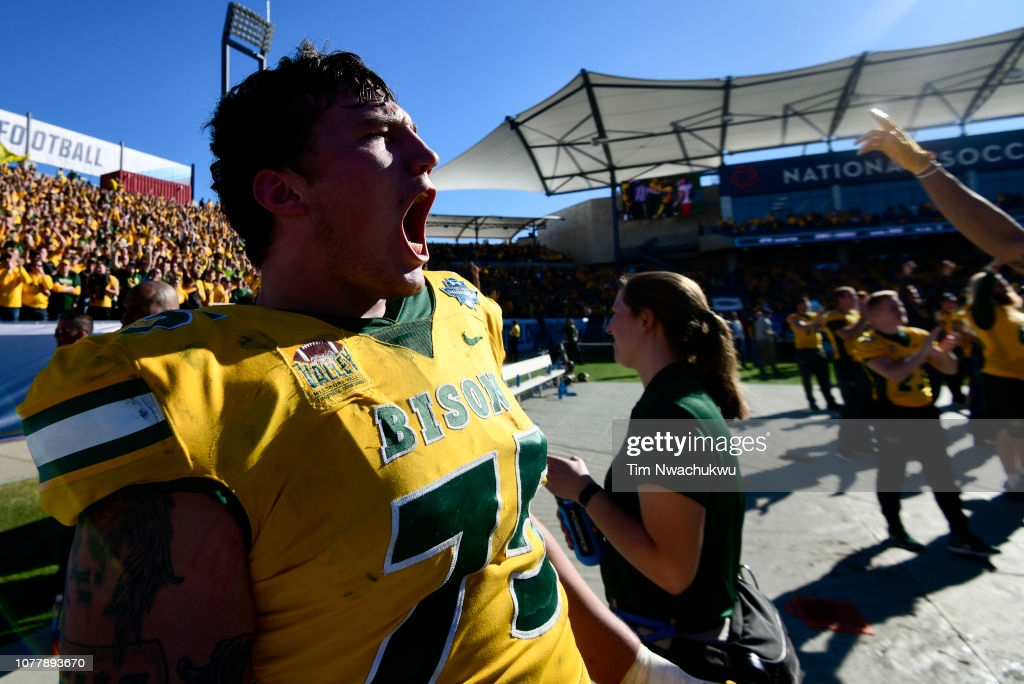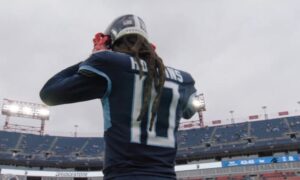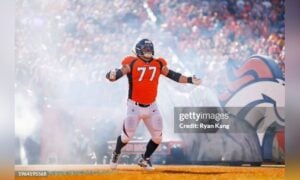Alex Kozora wrote an article last week on the history of drafting small school players in the Kevin Colbert era. (Hint: he tends to wait until the value is overwhelming, which is longer than other GM’s). That article helped to crystallize some thoughts that have been swirling around. With draft day looming I thought they deserve some focused attention. And now I am convinced:
I predict that small school prospects are going to fall further this year than they have in the past, including some real fan favorites.
Book it. We all understand the basic reason why smaller schools get a discount in the first place:
- Iron sharpens iron. Players get better when they play and practice against better opponents. Power 5 players get to do that for several years, but small-school players do not.
- Iron cuts through bronze. A week at the Senior Bowl can only prove so much, and testing can only erase or confirm the question marks there on the film. We pretty much know the mettle (metal?) of those large-school kids. The core at the heart of the small-schoolers must always remain a guess.
Those principles have direct analogies to what we look for in the NFL draft. David Moore is an IOL prospect from Grambling who put up some of the most hysterical film you could ever hope to see. He travels the field like a 330-pound ogre tossing gnomes into the air from a fungo bat. It looks like Quenton Nelson film from Notre Dame, but more so. If Grambling was another Notre Dame, Moore would be a Top 20 pick even in this year’s class with all the QB’s at the top. But Grambling isn’t Notre Dame, so it isn’t a one-to-one comparison. He earns a 4th-round grade on our board to account for that difference.
We do it every year, and there’s nothing unusual about it. I’d even argue that we’re good at it.
Our film watchers do a fine job of evaluating the information we can access. They watch the film, see what is there, and make accurate notes of what isn’t. The teams have more expertise, and vastly more film, but it’s a similar process and I truly believe that we aren’t that far behind. Not yet.
Our next step is to cross-reference that film against the athletic testing, looking for reasons to support, question, or refine our interpretation of what the film shows. Again, the teams do much the same thing, with added data in the form of medical records and the like. At that point the playing field changes. We amateurs run into a wall. The teams live in a whole different world.
Imagine how your opinion of any particular prospect might change if you actually met him in the market and had a quick conversation about football there in the aisle. Huge! The teams consider that barely a starting point. That’s the 5-minute meet-and-greet they get to do at the Senior Bowl and the Combine. Prospects a team really wants to consider fly into town for a day-long set of meetings, where the brass and the professional experts can poke, prod, and get to know them in person. You and I will speculate endlessly about subtleties that suggest a higher or lower football IQ, learning style, discipline, approach to problems, self-evaluation, and many other factors. The teams don’t “speculate,” they “evaluate.” It’s the difference between hiring someone off their resume, versus shaking their hand and meeting eye to eye for a face to face.
Not at all the same thing. Except for this year, because Covid prevents the teams from bringing in prospects for a visit.
Imagine how much your opinion might change about that job candidate if you got to speak with his former boss, coworkers, and support staff who worked around him. You and I get barely a whisper of that information when it comes to NFL prospects. The teams have experts who will actually go and speak with the college head-, strength-, and position coaches. They check around the campus for how a prospect is viewed by teachers, fellow students, support staff, and teammates. For earlier draft picks they’ll even go back to High School information.
Except for this year, because Covid cripples a lot of those double- and triple-checks.
Mike Tomlin spoke earlier this week about using established relationships as a substitute for direct meetings. That can work for the large programs where the relationships tend to exist. But who do the Steeler coaches really know at Tulsa, or Wisconsin-Whitewater? Nothing like the number of people they know at Ohio State or Oklahoma, that’s for sure.
So here’s the bottom line: we all discount the small school prospects because they can never be as safe as those from a larger program. You and I will apply more or less the same discounts as always because Covid has limited us across the board; for large and small school players alike. That isn’t true for the professionals. Kevin Colbert and his peers face many more Covid-related problems for small school evaluations than they do for prospects from bigger programs. What else can they do? They must lower the grades on small school players even more than they usually would.
Here are a few specific examples to consider.
QB Trey Lance, N. Dak. St. (On our board with a top-10 grade). This may be the one exception because teams have been studying this young man with a microscope for the past several years, and it’s hard to call that particular school “small” after all its recent success. By now the NFL must know its coaches and staff pretty well. Still, he did not get to play in 2019, so no one will be surprised if he drops closer to #10 than to #3, which is where he stood a year ago.
ILB Zaven Collins, Tulsa. (On our board with a fringe-1st grade). I am not the only draftnik who’s thoroughly enamored with the potential of this small-school unicorn. If Collins could play in Pittsburgh like he did at Tulsa… Excuse me. I had a moment. In a normal year he might be in consideration for the pick at #24 overall. But this year? When the F.O. cannot do the work to get past all those niggling little question marks? I expect they are looking at him for pick #55, not as an option for #24.
T/G Dillon Radunz, N. Dak. St. (On our board with a mid-2nd grade). Same school as Trey Lance, with the same issues. We have him in a dead tie on our board with Alex Leatherwood from Alabama. That’s about right for a normal year. In 2021? Round 3 makes a lot more sense.
C/G Quinn Meinerz, Wisc.-Whitewater. (On our board with a late-2nd grade). Again, that is exactly where we ought to have him compared to how we have graded in earlier years. It’s probably close to where the teams would have him in earlier years. But can we really expect the teams to grade like they usually do, with all all the limitations imposed by Covid? Probably not. I have poo-poohed the idea from time to time, and you can’t find a simulator where he’ll drop, but the more I think it over, the more likely it seems that he will be there in Round 3 for pick #87. Josh Myers out of Ohio State is so much safer that it’s almost hard to compare.
OT Spencer Brown, N. Iowa. (On our board with an early-3rd grade). The names around him on our Board include prospects from Florida, Clemson, Stanford, and Cincinnati. That’s entirely consistent with the discounts we’d apply for a normal year. Higher upside, bigger risk. If the teams are forced to apply a deeper discount… Early 4th? Maybe available at the 4a pick?
It continues all through the draft. OT D’Ante Smith from E. Carolina. EDGE Jordan Smith from UAB. CB Robert Rochell from Central Arkansas. EDGE Elerson Smith from N. Iowa. Etc. Fans are going to see potential bargains, just as we always do. Teams will see uncharted waters a lot murkier than they’re used to. They will wait that much longer than we expect before pulling the trigger.
Don’t be surprised if a pattern emerges with the opt-out prospects falling more than we expect, and the small-school prospects falling even further than that. It won’t be our evaluations at fault. They haven’t changed, and they shouldn’t change, because we occupy much the same viewpoint as always. It’s the team-level grades that are going to drop, because Covid has brought the likes of Kevin Colbert a few steps closer to our level.








